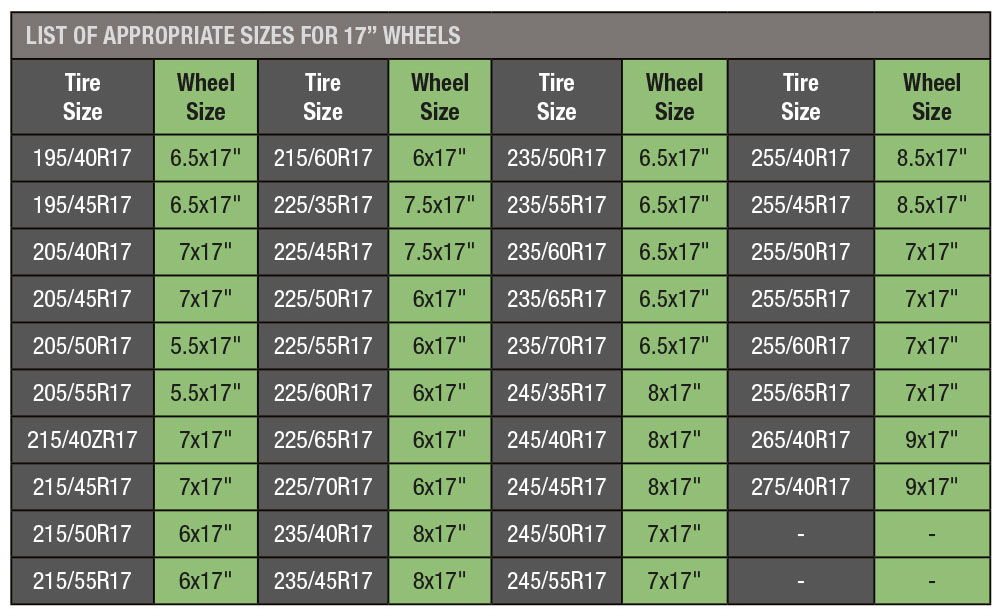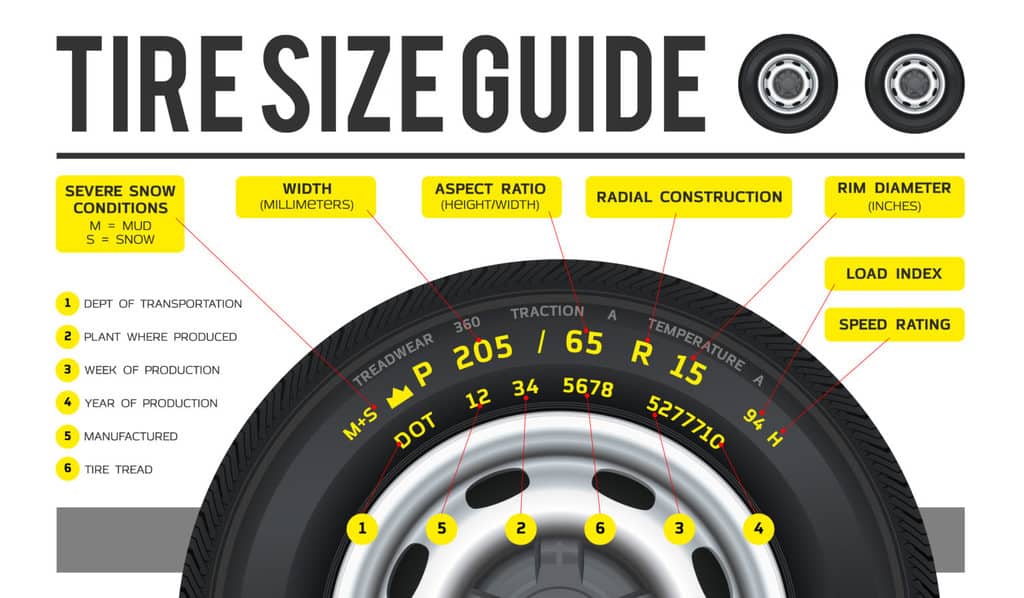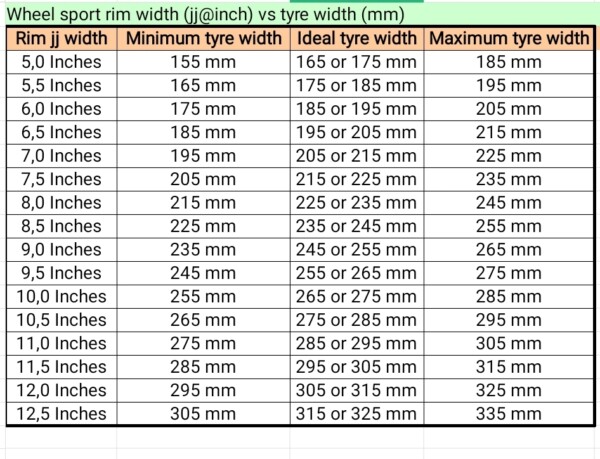What is Rim and Tyre Size?
Rim and tyre size are critical components of a vehicle’s overall performance, safety, and aesthetics. The rim, also known as the wheel, is the outer circular component of a tyre, while the tyre is the rubber casing that surrounds the rim. Rim and tyre size are typically expressed using various measurement systems, such as inches or metric units, depending on the region and vehicle type.
The rim size is often represented by its diameter, while the tyre size includes information about its width, aspect ratio, and construction type. For instance, a tyre size of 225/45R17 indicates a tyre width of 225 millimeters, an aspect ratio of 45 (the height of the tyre sidewall as a percentage of its width), and a rim diameter of 17 inches. A larger rim and tyre size generally results in better handling, increased traction, and an enhanced appearance, but it may also lead to reduced fuel efficiency and a harsher ride.
How to Determine the Right Rim and Tyre Size for Your Vehicle
Selecting the appropriate rim and tyre size for a vehicle is a crucial decision that depends on several factors, including the vehicle’s make and model, driving habits, and local road conditions. The first step in determining the right rim and tyre size is to consult the vehicle owner’s manual, which typically provides recommended sizes based on the manufacturer’s testing and research.
For a more personalized approach, consider consulting a trusted automotive expert, such as a mechanic or tyre specialist. These professionals can provide expert guidance based on your specific driving style, preferences, and requirements. For instance, if you frequently drive on rough or uneven terrain, a larger tyre size with a more robust tread pattern may be more suitable to provide better traction and protection against punctures.
When selecting a rim and tyre size, it is essential to consider the vehicle’s suspension and brake systems. A larger rim and tyre size may require modifications to these systems to ensure proper fitment and functionality. Additionally, local road conditions and speed limits may influence the ideal rim and tyre size. For instance, if you live in an area with strict speed limits and well-maintained roads, a smaller rim and tyre size may be more appropriate to optimize fuel efficiency and ride comfort.
Benefits of Upgrading Rim and Tyre Size
Upgrading rim and tyre size can offer several potential advantages, including improved handling, increased traction, and enhanced appearance. Larger rims and tyres can provide better grip and stability, particularly in challenging driving conditions such as wet or snowy roads. Additionally, a larger tyre size can contribute to a more aggressive and stylish look, enhancing the vehicle’s overall aesthetics.
However, it is essential to balance these benefits with potential drawbacks. For instance, upgrading to a larger rim and tyre size may result in increased fuel consumption due to the additional weight and rolling resistance. Additionally, a larger tyre size may lead to a harsher ride, as the tyres may not absorb as many road imperfections as smaller tyres. Therefore, it is crucial to weigh the benefits and drawbacks carefully and consult with a trusted automotive expert before making a decision.
When upgrading rim and tyre size, consider factors such as driving style, budget, and vehicle aesthetics. For instance, if you frequently drive on rough or uneven terrain, a larger tyre size with a more robust tread pattern may be more suitable to provide better traction and protection against punctures. On the other hand, if you prioritize fuel efficiency and ride comfort, a smaller tyre size may be more appropriate.
Choosing the Right Rim Material and Design
Rims are available in various materials and designs, each with its unique advantages and disadvantages. The most common materials include alloy, steel, and forged options. When selecting the best rim material and design, consider factors such as driving style, budget, and vehicle aesthetics.
Alloy Rims
Alloy rims are a popular choice due to their lightweight and durable nature. They are typically made from a combination of aluminum and other metals, providing excellent heat dissipation and corrosion resistance. Alloy rims are available in a wide range of designs and finishes, making them a versatile option for various vehicle styles. However, they may be more expensive than steel rims and may require more frequent maintenance.
Steel Rims
Steel rims are a cost-effective option that offers good durability and strength. They are less prone to damage from curbs and potholes than alloy rims, making them a suitable choice for off-road or winter driving conditions. However, steel rims are heavier than alloy rims, which may negatively impact fuel efficiency and ride comfort. Additionally, they may be more susceptible to rust and corrosion over time.
Forged Rims
Forged rims are a high-end option that offers superior strength and durability compared to alloy and steel rims. They are manufactured using a forging process that involves heating and shaping the metal, resulting in a denser and more robust rim. Forged rims are typically lighter than alloy rims, providing better fuel efficiency and ride comfort. However, they are more expensive than alloy and steel rims and may not be as widely available.
When selecting a rim design, consider factors such as wheel offset, bolt pattern, and centre bore. Wheel offset refers to the distance between the rim’s mounting surface and its centreline. A rim with a positive offset will sit closer to the vehicle’s body, while a rim with a negative offset will sit further away. Bolt pattern refers to the number and arrangement of lug holes on the rim, while centre bore refers to the size of the hole in the centre of the rim that accommodates the vehicle’s hub.
Popular Tyre Brands and Models for Different Rim Sizes
When it comes to rim and tyre size, selecting the right tyre brand and model is crucial to ensure optimal performance, safety, and longevity. Here are some popular tyre brands and models suitable for various rim sizes:
17-inch Rims
For 17-inch rims, consider the Michelin Pilot Sport 4 or the Bridgestone Potenza RE97AS. The Michelin Pilot Sport 4 offers excellent grip and handling in both wet and dry conditions, making it a popular choice for high-performance vehicles. The Bridgestone Potenza RE97AS, on the other hand, provides a comfortable ride and reliable performance in various driving conditions. Both tyres feature advanced tread patterns and compounds that help improve fuel efficiency and reduce rolling resistance.
18-inch Rims
For 18-inch rims, the Continental ExtremeContact DW and the Pirelli P Zero All Season Plus are popular options. The Continental ExtremeContact DW offers excellent cornering grip and stability, making it a great choice for sports cars and high-performance sedans. The Pirelli P Zero All Season Plus provides reliable all-season performance, with a focus on comfort and quiet operation. Both tyres feature advanced tread patterns and compounds that help improve handling and reduce rolling resistance.
19-inch Rims
For 19-inch rims, the Goodyear Eagle F1 Asymmetric 5 and the Hankook Ventus S1 evo3 are popular choices. The Goodyear Eagle F1 Asymmetric 5 offers excellent grip and handling in both wet and dry conditions, with a focus on high-speed stability and cornering performance. The Hankook Ventus S1 evo3 provides reliable all-season performance, with a focus on comfort and quiet operation. Both tyres feature advanced tread patterns and compounds that help improve handling and reduce rolling resistance.
When selecting a tyre brand and model, consider factors such as tread pattern, compound, load rating, and speed rating. Tread pattern and compound can significantly impact performance, safety, and longevity, while load rating and speed rating indicate the tyre’s maximum load capacity and speed capability, respectively. Consult the vehicle owner’s manual or a trusted automotive expert for guidance on selecting the right tyre for your specific driving conditions and requirements.
Maintaining Rim and Tyre Size: Best Practices
Proper maintenance of rim and tyre size is crucial to ensure optimal performance, safety, and longevity. Here are some best practices to follow:
Regular Inspections
Regularly inspect your rims and tyres for any signs of damage, such as cracks, cuts, or bulges. Check the tyre tread for uneven wear, which can indicate issues with alignment or inflation. If you notice any of these issues, consult a trusted automotive expert for further guidance.
Rotations and Balancing
Rotate your tyres every 5,000 to 10,000 kilometres to ensure even wear and prolong their lifespan. Additionally, have your tyres balanced regularly to prevent vibrations and improve ride comfort. Consult your vehicle owner’s manual or a trusted automotive expert for guidance on the recommended rotation and balancing schedule for your specific vehicle and tyre type.
Proper Tyre Inflation
Maintaining proper tyre inflation is crucial to ensure optimal performance, safety, and fuel efficiency. Check your tyre pressure regularly, ideally once a month, and adjust as necessary. Consult your vehicle owner’s manual or the tyre placard on your vehicle for the recommended tyre pressure.
Proper Alignment
Proper wheel alignment is essential to ensure optimal handling, safety, and tyre longevity. Have your wheel alignment checked regularly, ideally once a year or every 10,000 kilometres, and adjust as necessary. Consult a trusted automotive expert for guidance on the recommended alignment schedule for your specific vehicle and tyre type.
Common Issues
Uneven wear, bulging, and other common tyre issues can be caused by a variety of factors, including improper inflation, misalignment, and worn-out suspension components. Consult a trusted automotive expert if you notice any of these issues, as they can significantly impact your vehicle’s performance, safety, and longevity.
Rim and Tyre Size Myths and Misconceptions
When it comes to rim and tyre size, there are several myths and misconceptions that can lead to misinformed decisions. Here are some common myths and misconceptions, along with the facts to debunk them:
Myth: Larger Rims Always Result in Better Performance
Fact: While larger rims can offer improved handling and appearance, they can also result in reduced ride comfort and increased fuel consumption. Additionally, larger rims may not be suitable for all driving conditions, such as off-road or winter driving. It’s essential to balance the benefits of larger rims with the potential drawbacks and consult a trusted automotive expert for guidance.
Myth: Wider Tyres Provide Superior Grip in All Conditions
Fact: While wider tyres can offer improved grip and traction in dry conditions, they may not perform as well in wet or snowy conditions. Additionally, wider tyres can result in increased rolling resistance and reduced fuel efficiency. It’s essential to consider the specific driving conditions and requirements when selecting tyre width.
Myth: Lower Profile Tyres Improve Handling and Performance
Fact: While lower profile tyres can offer improved handling and appearance, they can also result in reduced ride comfort and increased road noise. Additionally, lower profile tyres may not be suitable for all driving conditions, such as off-road or winter driving. It’s essential to balance the benefits of lower profile tyres with the potential drawbacks and consult a trusted automotive expert for guidance.
Myth: Tyre Size Has No Impact on Fuel Efficiency
Fact: Tyre size can significantly impact fuel efficiency, as larger or wider tyres can result in increased rolling resistance and reduced fuel efficiency. It’s essential to consider fuel efficiency when selecting tyre size and consult the vehicle owner’s manual or a trusted automotive expert for guidance.
Myth: Rim and Tyre Size Can Be Changed Without Affecting Vehicle Performance
Fact: Changing rim and tyre size can significantly impact vehicle performance, including handling, fuel efficiency, and ride comfort. It’s essential to consult a trusted automotive expert and consider the specific driving conditions and requirements when selecting rim and tyre size.
The Future of Rim and Tyre Size Technology
As technology continues to advance, we can expect to see significant changes and improvements in rim and tyre size technology. Here are some potential advancements and trends to look out for:
Advancements in Materials
One area of advancement in rim and tyre size technology is the development of new materials that offer improved strength, durability, and lightweight properties. For example, carbon fibre rims are becoming increasingly popular in high-performance vehicles due to their lightweight and strong nature. Similarly, new tyre compounds and tread patterns are being developed to offer improved grip, traction, and fuel efficiency.
Design and Manufacturing Processes
New design and manufacturing processes are also being explored to improve rim and tyre size technology. For example, 3D printing is being used to create custom rims and tyres with unique designs and shapes. Additionally, new manufacturing processes, such as flow forming, are being used to create stronger and more durable rims with improved heat dissipation properties.
Impact of Electric Vehicles and Autonomous Driving
Emerging trends, such as electric vehicles and autonomous driving, are also expected to impact rim and tyre size technology. For example, electric vehicles typically require lower rolling resistance tyres to maximize range and efficiency. Additionally, autonomous driving may result in different driving patterns and requirements, leading to changes in rim and tyre size selection and performance.
Smart Tyres and Rims
Finally, the development of smart tyres and rims is an exciting area of innovation in rim and tyre size technology. Smart tyres and rims can communicate with the vehicle’s onboard systems to provide real-time data on tyre pressure, temperature, and wear. This information can be used to optimize performance, safety, and fuel efficiency, as well as to alert drivers to potential issues before they become serious problems.
Overall, the future of rim and tyre size technology is promising, with advancements in materials, design, and manufacturing processes, as well as the potential impact of emerging trends such as electric vehicles and autonomous driving. As a result, drivers can expect improved performance, safety, and efficiency in their vehicles’ rim and tyre size technology in the coming years.






